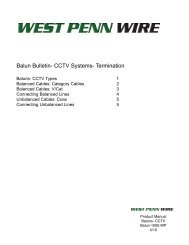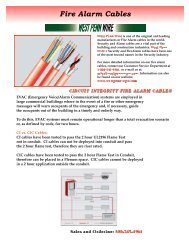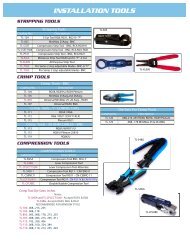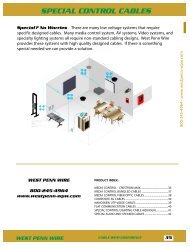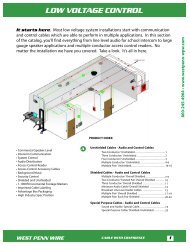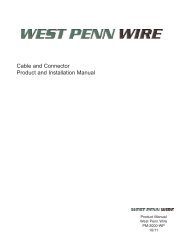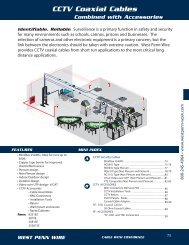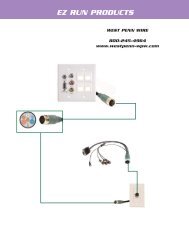You also want an ePaper? Increase the reach of your titles
YUMPU automatically turns print PDFs into web optimized ePapers that Google loves.
Fiber Elements<br />
Fiber optic cable provides the most advanced communication<br />
media available today. An increasing amount of fiber will be<br />
installed in the future as we find more and more uses for this<br />
technology. Fiber optic cable can support voice, data, video, and<br />
other types of transmission, and offers many advantages over<br />
standard copper circuits which we will discuss later in this section.<br />
Core<br />
This is the very center of the cable and is the light guiding area<br />
used for light transmission. The size of the core will determine the<br />
amount of light to be transmitted into the fiber. The larger the<br />
core, the greater the amount of light will that will be transmitted.<br />
Cladding<br />
The cladding surrounds the core glass and serves to refract the<br />
light back into the core. The cladding has a different index of<br />
refraction than the core so that the lightwaves are re-directed back<br />
into the core allowing continued light transmission through the<br />
fiber.<br />
Coating<br />
Several coatings of acrylate are usually applied to the fiber to provide<br />
tensile strength and protection to the glass fiber core.<br />
Jacket<br />
The cable jacket works along with the aramid fibers to provide<br />
strength, integrity, and overall protection of the fiber member.<br />
There are a variety of jacketing materials that are used in fiber<br />
optic cable construction. Standard compounds and special variations<br />
of these compounds can be used in making the jacket. The<br />
jacket should be appropriate for the environmental conditions that<br />
the fiber optic cable will be subjected to. Environmental parameters<br />
that should be considered include temperature variations,<br />
chemical reactance, sunlight resistance, mechanical and abrasion<br />
resistance.<br />
Fiber Optic Cable Types<br />
Fiber Optic Cable Construction<br />
Buffered Fiber<br />
Fiber Optic Size - This is measured by comparing the core size to the cladding size. This is expressed by the core diameter and then the<br />
cladding with coating diameter.<br />
Example: 62.5/125., 62.5 being the core diameter and 125 being the cladding with coating diameter.<br />
Fiber Optic Modes - There are basically two types or modes of fiber optic cable, single-mode and multimode.<br />
Single-Mode - The core on single-mode is about 8-10 micron.<br />
This small core size allows only one mode of light to travel within<br />
the core at a time. The higher the bandwidth, the more information<br />
carrying capacity the cable has. This type of cable is good for long<br />
distances, and is often used by telephone companies for long transmissions.<br />
188<br />
Technical Reference<br />
Multimode - The core on multimode is about 50 - 100 micron. A<br />
larger core allows many light pulses or modes to travel through the<br />
core simultaneously. Mode overlap can occur over extremely longer<br />
distances and may cause bit errors. Multimode is best used for<br />
lengths up to 2 kilometers.



